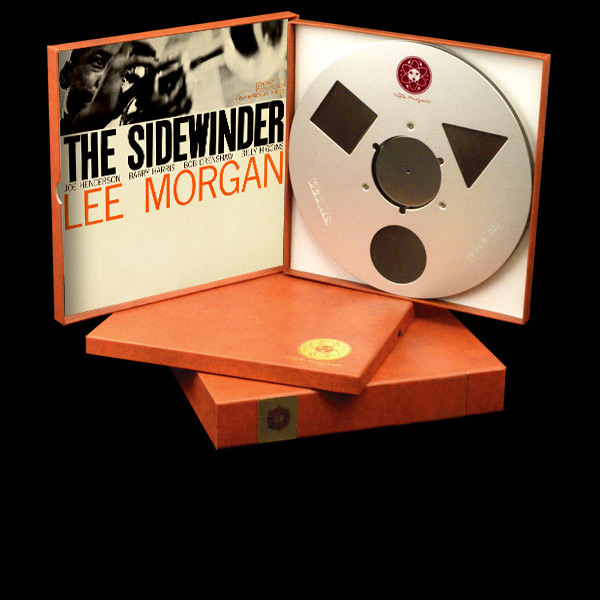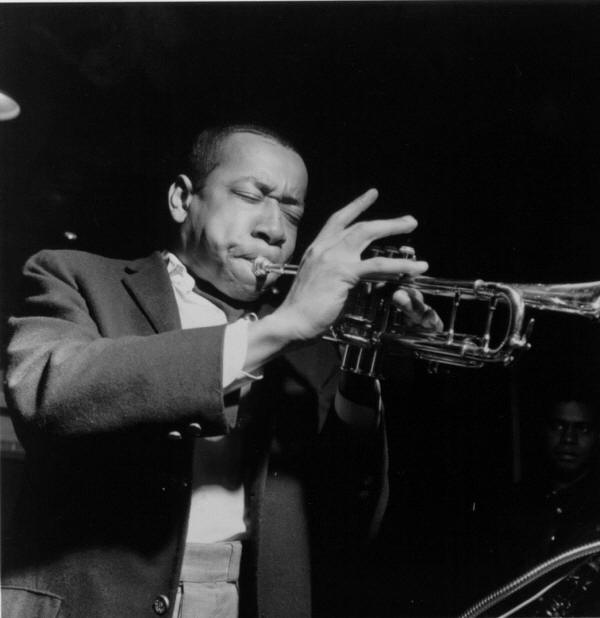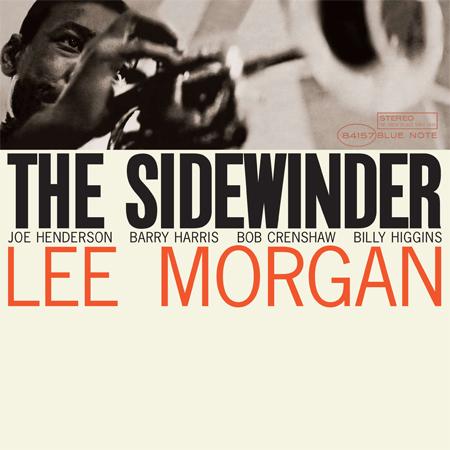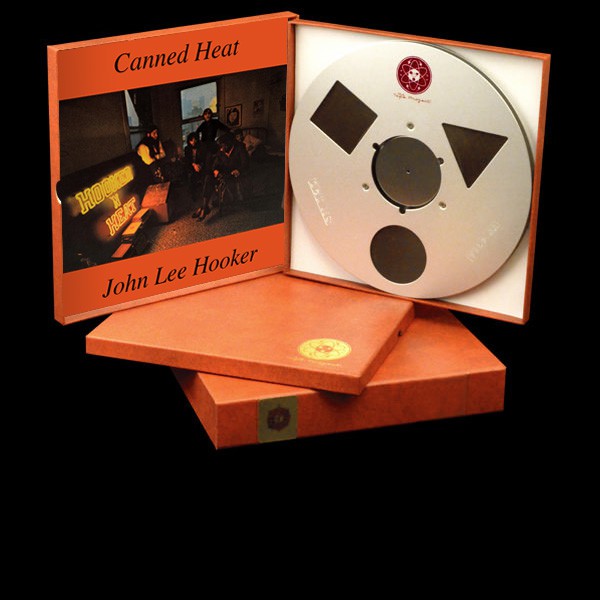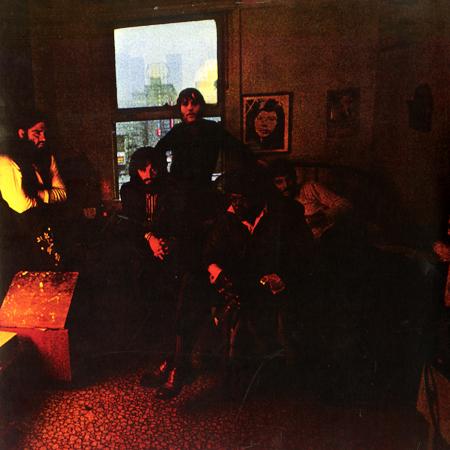You are reading the older HTML site
Positive Feedback ISSUE 79
The Reel Deal - A Pair from The Tape
Project's Third Series of Releases
Dan Schmalle, Paul Stubblebine and Mike Romanowski, aka The Tape Project's tres amigos, are more than anyone else responsible for putting the reels back in motion. When my first Tape Project piece appeared in the virtual pages of PF some six years ago now (Issue 46), these folks were the only game in town; today the number of companies releasing both new and reissued recordings on 10-inch reels stands at last count at a staggering—and mind you in this digital age—17. That's quite a testimony to this trio's hard work, perseverance and most of all, the sonics of these tapes. As I like to say, once you hear tape, there's no going back. Make no mistake though. Other than the medium, there is absolutely no resemblance or comparison between yesteryear's high speed duped, commercially available reel-to-reel tapes and The Tape Project's currently available, painstakingly real time copied, 2½ generation, 15-ips, 2-track copies. Also setting The Tape Project tapes apart from the competition is the unsurpassed quality of their packaging (equaled only recently by recent Lutz-Precision/Horsh House tapes from Germany and the OpenReelRecord tapes from Italy). No, The Tape Project (or other companies) tapes aren't cheap but consider for a moment that in back in 1960 2-track tapes (generally just one reel or side of an album) retailed for $20. Then take than number and plug it into the CPI, multiply by two for both reels and 55 years later it's essentially a financial wash. The Tape Project is now halfway through its third series (of ten) tape releases and arguably this pair of recordings that marked the rebirth as well as setting the future tone for Lee Morgan's and John Lee Hooker and Canned Heat—not to mention in many people's mind representing each artist's finest efforts—are among the highlights so far. Lee Morgan: Sidewinder, Lee Morgan: Trumpet, Joe Henderson: Tenor sax, Barry Harris: Piano, Bob Cranshaw: Bass, Billy Higgins: Drums. Recording engineer: Rudy van Gelder. Recording date: December 21, 1963. Tape Project TP-023, 15-ips, 2-track reel-to-reel tape. Price: $375 (for two reels). Sidewinder marks The Tape Project's third trip into the Blue Note vaults (the prior being Clifford Brown: Memorial Album and Jimmy Smith: The Sermon) and without a doubt they hit a home run with this release! For Sidewinder heralds Lee Morgan's return to legendary Rudy van Gelder's recording studio after leaving the Jazz Messengers in 1961 and battling the demons of drug addiction (sadly something that plagued this great trumpet player throughout his career).
In many ways Sidewinder saved both Morgan's career and Blue Note from bankruptcy. As Michael Cuscuna put it in Richard Cook's Blue Note Records: The Biography, "Once you have success and are an independent label of any kind of music, you go through a series of independent distributors that cover different geographic areas, and you ship them records, and you want them to sell them so you ship them more, and they won't pay you for the last release (same goes for the magazine business also) until you have a new release that they want. It is really a game of chasing your own tail. So the more successful he was, the more Alfred had to go out on a limb economically, and the more pressure there was to match the success.” So the growing success for this small label was also at the same time creating a cash flow problem and putting a huge strain on Blue Note's finances. Then came Sidewinder. Sidewinder was a monster hit album from the get-go for Blue Note and saved the company from their crippling cash flow problems. According to Cook, "Most Blue Notes might ship no more than four or five thousand copies.... Solid catalogue items like the Monk and Rollins records, or recent Blakey and Silver albums, could tick along at a steady pace, with occasional repressing as the stock situation determined; a Baby Face Willette album might languish altogether and eventually end up as a deletion. In the case of Sidewinder, though, repeat orders, which for a previous Lee Morgan album might have been in the scores or hundreds, ended up in the thousands.” Sidewinder reached the top 25 on the Billboard music charts, the first 4000 or so copies (a typical first run) sold out almost immediately, the title track was used in a Chrysler car advertisement in the 1965 World Series (apparently without the appropriate licensure) as well as a theme for a TV show. Sidewinder was, according to Richard Cook, Alfred Lion and Blue Note's biggest hit. Today, Sidewinder resides on most all jazz critic's top recordings lists.
Lee Morgan The heir apparent to Clifford Brown (sadly both trumpeters died way too young), Morgan was a child prodigy known for being a gifted trumpet player and his classic Bebop style, his technique and trumpet tone as well as modern rhythms, harmonies and melodies. Set in Rudy van Gelder's now legendary living room, Sidewinder was recorded on December 21, 1963. The tape reissue features the quintet's original five songs plus a specially licensed alternative version of "Totem Pole.” "Sidewinder,” the 24-bar blues tinged hit single made its mark for its marriage of jazz and soul, its bluesy "boogaloo" sound (fusion of popular African-American R&B and soul with mambo and son motuno) and the rhythm section featuring the then up and coming 26 year old Joe Henderson on tenor sax, Billy Harris on piano, Bob Cranshaw on bass and Billy Higgins on drums. Perhaps the most unique aspect of "Sidewinder" is (as has been pointed out more than once) that that despite the lengthy title track, each member of Morgan's quartet takes only one solo. As good as Sidewinder is, some critics consider "Totem Pole's" Latin rhythm and Henderson's solo sax Harris' extended drum work the album's piece de resistance. There's simply no missing the energy between Henderson and Morgan as they constantly work to better each other. When all is said and done, "Totem Pole's" melody will stick with you long after the tape (or record) is stored away on the shelf. The rest of the album plus the specially licensed alternative version of "Totem Pole" (only available on the tape and CD releases) contains three other songs including the straight ahead style with its use of tension and release of "Gary's Notebook" written for buddy of Morgan's and "Boy What a Night,’ a blues waltz with solo after solo and funky rhythm. Higgins keeps the group in its groove and finishes with "Hocus Pocus,”a simple swing tune, a nice easy blowing thing with a standard chorus length.” As on the other songs, the group is really tight and there's great interplay between Higgins and the rest of the quartet here.
What sets the tape apart say from the 2010 45 rpm LP release from Analog Productions or the more recent, 33⅓ rpm effort from Music Matters? For one thing, there's less ambience surrounding Morgan's trumpet or the other players on the LP version; the net effect is the musicians are more in your room than recording studio. In addition, the LPs are not as dynamic nor as harmonically rich as the tape. In contrast the tape simply fills the listening room with sound though it lacks a little of the pin point imaging of the LP. The 45 rpm Analogue Productions release appears at first blush more extended and detailed than the 33⅓ rpm release but in reality, the Music Matters Jazz 33⅓ rpm is in some ways a little more faithful to the original tape because of its lack of edginess. There's also say on "Totem Pole" on the MMJ 33⅓ rpm release a bit more definition at the extremes, during Harris' solo or more of the supporting bass line from Cranshaw than the 45 rpm release. Nevertheless, Sidewinder in either analog format, tape or vinyl, is an absolute must-have for any self-respecting jazz collector. There's nothing better for those lucky enough to own a tape machine than the Tape Project release. If you don't own a tape machine, then definitely make it your business to pick up the currently available 33⅓ rpm release from Music Matters or 45 rpm release from Analogue Productions before they go out of print. Hooker ‘N' Heat: John Lee Hooker and Canned Heat, Recording engineer: Dino Lappas. Recording date: May 1970. Tape Project TP-025, 15-ips, 2-track, reel-to-reel tape. Price: $375 (for two reels). Hooker ‘n' Heat was so popular that this early '71 blues album shot its way up all the way up the pop charts to number 73 that year. Nor apparently has time diminished the popularity of this album once described by Hooker as, "…absolutely ‘the best’” one iota as The Tape Project reel-to-reel reissue was totally sold out at the time of writing this review some forty five years later. According to Charles Shaar Murray, author of Boogie Man: The Adventures of John Lee Hooker in the American Twentieth Century (McMillan, 2000), "the extraordinary high quality of Hooker ‘n' Heat is that Taylor and the band…. Were determined to cut a John Lee Hooker album featuring Canned Heat rather than a Canned Heat album featuring John Lee Hooker.” Another reason was that Hooker was, "simultaneously still youthful and energetic enough to pump out the boogie with awe-inspiring tireless ferocity; and sufficiently tempered by age and bitter experience to bring to the music a depth and richness to which the comparatively young and callow Hooker of twenty years earlier could never have aspired.”
Just as Morgan resurrected his career with Sidewinder, so were many of the blues artists being rediscovered by the general public in the early ‘60s. (Not to mention Canned Heat was reliving their roots with this album.) This album is very reminiscent of that great Elvis '57 release (Analogue Productions APP 057-45) because of its rawness and banter between the Hooker, Canned Heat and recording crew. One of the more amusing breaks occurs after "You Talk too Much" where Hooker says, "You got about ten now. I told you it don't take me no three days to make no album.” From the control room comes, "It's a triple album.” To which Hooker retorts, "Well, you go for a triple album, you gotta go for triple money.” After much laughter, the producer responds, "Lots of money! This is a hit album. Don't worry about the money, just keep rolling.” This pair of reels contains selected material taken from those three glorious days of recording at Liberty's LA Studio and the original three reels worth of material. The tres amigos selected what they felt, "were the very best tracks,” and as a footnote added, "brother, I'm here to say it was not an easy choice.” (Pure Pleasure Records recently reissued Hooker ‘N' Heat in its entirety on a two record set). In many ways reel 1 is but a warmup for reel 2. Reel one starts out with Hooker doing his thing on his Epiphone guitar and Old Blondie, then joined in by Wilson on harp, piano or guitar finally joined in by and featuring all of Canned Heat culminating that eleven and a half minute boogie jam session "Boogie Chillen No. 2.” Reel one kicks off with as Shaar described it, Hooker on the brash sounding Old Blondie performing "one of Chicago harpist Junior Wells's signature songs" "Messing with the Hook.” Enter Alan Wilson on Harp in "You Talk Too Much" answering Hooker's guitar on this up tempo piece. Then there's the anti-war, campus protest song "The World Today" with the multi-talented Alan Wilson now accompanying Hooker on piano. One somber note about the recording. Alan Wilson died soon after this album was finished and in tribute the album cover features the surviving members of Canned Heat and Hooker in a flea bag hotel room with Wilson's picture hanging on the wall.
Sonically, reel one with its simpler presentation is a touch better sounding than the second reel. If you want to hear all songs from the original three reels, then check out the Pure Pleasure LP reissue that is a decent transfer if a little heavy in the low end. Compared to the tape, the Pure Pleasure release loses some of the original recording's ambience along with a thinning out of the vocals and loss of midrange information and palpability. In particular, the tape captures oh-so-much more of the decay, sound and body of Hooker's guitar. But in lieu of having a tape machine, the Pure Pleasure release is highly recommended—especially for those who want to hear the album as originally released—as the next best alternative. No self respecting tapehead should be without either of this pair of tapes. Highest recommendation!
|


